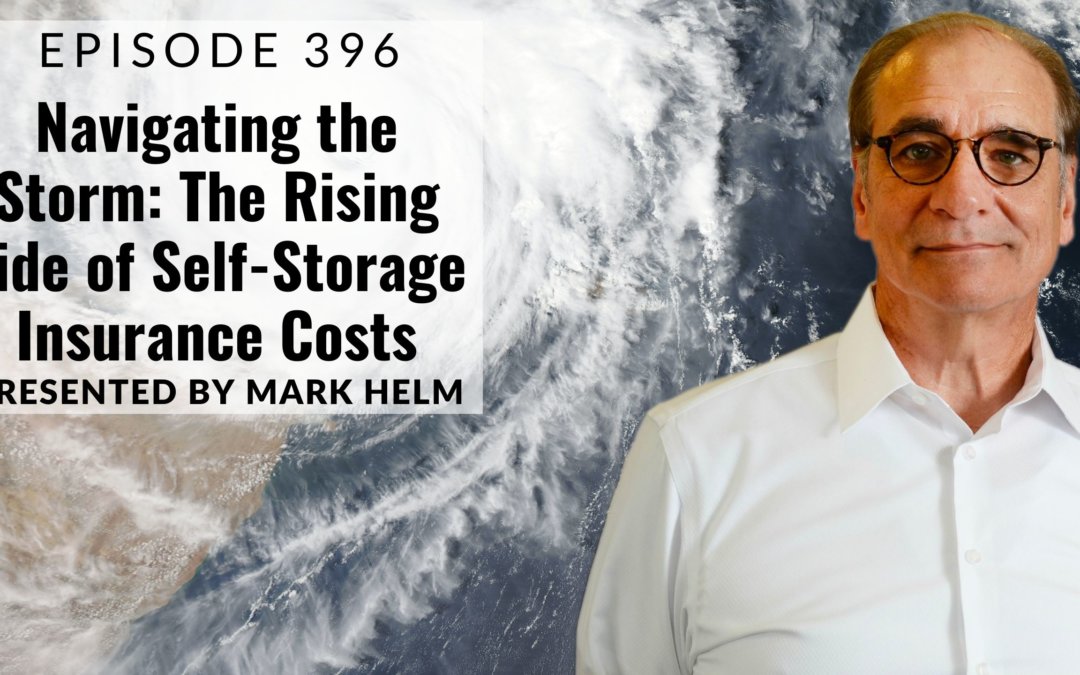In the ever-evolving landscape of self-storage business, owners and operators are bracing themselves for a challenging year ahead as insurance premiums continue to surge, outpacing most other operational expenses.
The days of predictable, marginal increases are behind us; in fact, we’re now entering an era where insurance costs could skyrocket by as much as 10% to 20% annually, if not more.
This isn’t just a short-term thing, either. I see no imminent disruptors on the horizon to halt this upward trend. If you are not already, I think a lot of self-storage owners and operators are going to be surprised at their upcoming year’s property insurance price increases.
The Forces Behind the Surge
Ignoring the undeniable link between climate change and the surge in extreme weather events is a luxury none of us can afford.
The scientific consensus is crystal clear, and the insurance industry stands as a testament to the tangible impacts of climate change.
Before Hurricane Ian wreaked havoc in Florida, the insurance market was already reeling from consecutive years of missed earnings targets by reinsurance companies.
However, climate change isn’t the sole culprit. Escalating construction costs and the rising price of building materials are significant contributors.
Damages and subsequent costs have mounted, causing a retreat in coastal aggregate capacity. Insurers are forced into the excess and surplus market, translating to higher premiums and potentially reduced coverage limits.
Now, one would think this would deter development near the coast, but in general, we self-storage developers follow people, and people are relocating near coastal areas.
I used to factor in higher premiums on facilities near the coast, but that is not the case anymore. Yes, their premiums are going up at exponential rates, but the fact is all parts of the country are being impacted by the higher premiums.
Underestimating the Challenge
One of the biggest mistakes we can make as self-storage owners is underestimating the long-term impact of rising insurance costs.
My coaching is just to make sure you don’t underestimate, like may are and will, the cost increases of this expense line item.
Yesterday, I worked with an owner on the Gulf Coast facing a yearly premium of over $40,000 for a modest facility.
This isn’t an isolated case; many owners find themselves in similar predicaments.
Turning Challenges into Opportunities
However, like all things, problems can also create opportunities.
The escalating insurance costs are prompting some mom-and-pop owners, hesitant to raise rents, to consider selling their properties.
For them, insurance becomes a driving factor pushing them toward the market.
Additionally, insurance companies in high-risk areas like Florida are reluctant to provide coverage to buildings without newer roofs. This requirement leaves many property owners with aging facilities in a precarious situation.
These owners, unable or unwilling to replace roofs for insurance purposes, might decide to sell rather than take on the risks of self-insuring.
For savvy investors and operators, this presents a unique chance to acquire properties in strategic locations.
Strategies for Navigating the Storm
In these turbulent times, preparedness and proactive strategies are key:
- Early Engagement: Connect with multiple insurance agents and providers during the due diligence process. Explore a variety of options to secure the best insurance deals tailored to your needs.
- Healthy Projections: Factor in substantial price increases in your financial projections over multiple years. Being conservative in your estimates can help cushion the impact of unforeseen premium hikes.
- Annual Evaluation: Continuously monitor the insurance landscape. Shop around yearly, engaging with numerous agents and companies to ensure you are securing the best available options.
- Seize Opportunities: Keep an eye out for properties coming into the market due to insurance-related challenges. These situations can be turned into profitable ventures for those willing to take calculated risks.
However, as people are used to pivoting, we can adapt to this new and evolving issue and adjust and prosper.
Be careful underwriting insurance and be on the lookout for how you can use this fact to acquire better deals.



